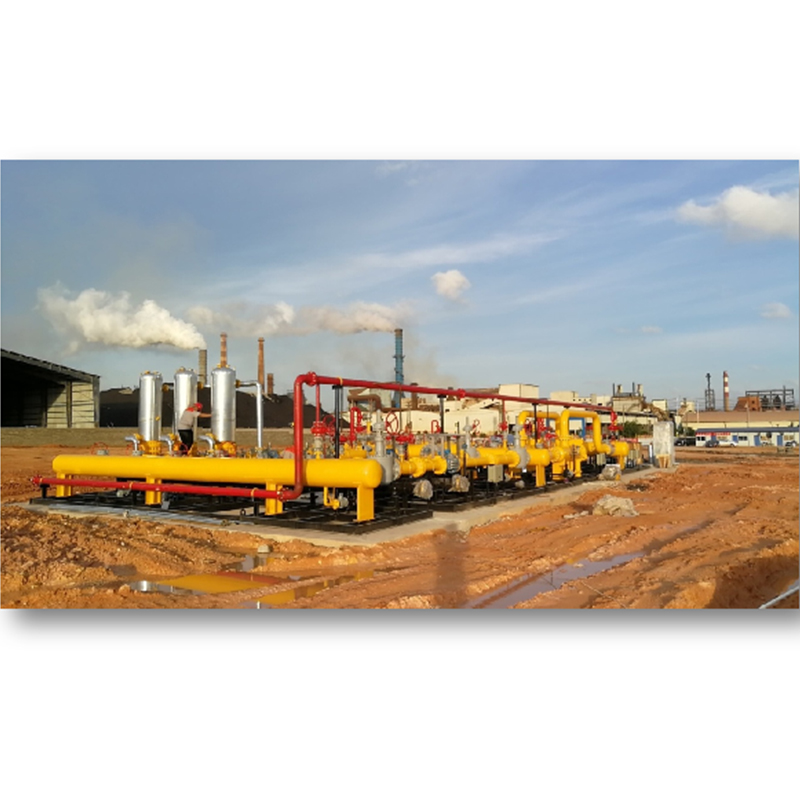
Aug . 13, 2024 09:42
Back to list
Understanding the Importance and Functionality of Natural Gas Safety Valves in Pipeline Systems
Understanding Natural Gas Safety Valves Essential Components for Safety and Efficiency
Natural gas is one of the most widely used energy sources around the world, powering homes, industries, and power plants. While it is economical and efficient, the inherent dangers associated with natural gas make safety a top priority. One of the key components that play a vital role in ensuring the safe use of natural gas is the safety valve. This article delves into the importance, functions, and types of natural gas safety valves.
What is a Natural Gas Safety Valve?
A natural gas safety valve is a critical device designed to protect gas systems and appliances from excessive pressure. It automatically releases gas if the pressure exceeds a predetermined level, thereby preventing potential hazards such as explosions or equipment malfunctions. These valves are particularly essential in maintaining safe operating conditions in natural gas pipelines, tanks, and domestic appliances.
Importance of Safety Valves
1. Preventing Hazards The primary purpose of a safety valve is to mitigate the risk of explosions and fires. In cases where the pressure builds up due to operational failures or blockages, the safety valve ensures that excess gas is vented safely away from the system.
2. Regulatory Compliance Many countries have stringent regulations regarding gas safety. Installing safety valves is often a mandatory requirement for compliance with national standards, ensuring that both commercial and residential installations adhere to legal safety protocols.
3. Equipment Protection By regulating pressure, safety valves help prevent damage to pipelines and appliances. High pressure can lead to ruptures or failures in the system, leading to costly repairs and replacements.
natural gas safety valve

4. Peace of Mind For consumers and businesses alike, knowing that a safety mechanism is in place enhances confidence in the use of natural gas. This peace of mind is essential for the widespread acceptance of natural gas as a clean energy source.
Types of Natural Gas Safety Valves
Natural gas safety valves come in various designs, each suited for specific applications. Some of the most common types include
1. Pressure Relief Valves (PRVs) These valves protect pressurized equipment and pipelines by venting excess pressure. When the pressure exceeds the valve's set point, it opens to allow gas to escape, thus maintaining safe operating levels.
2. Emergency Shut-off Valves (ESVs) Designed to provide an immediate shut-off of gas flow, these valves are crucial during emergencies, such as leaks or system failures. They can be manually operated or triggered automatically by detection systems.
3. Regulating Valves These valves control the pressure and flow of natural gas within a system. They ensure that gas distribution networks operate within safe pressure ranges, adjusting as needed to maintain consistent flows.
Conclusion
Natural gas safety valves are indispensable components in the safe utilization of natural gas. Their ability to prevent hazardous situations, ensure compliance with safety regulations, protect equipment, and offer peace of mind plays a critical role in the energy landscape. As industries and households increasingly turn to natural gas as a reliable energy source, the continued advancement and implementation of safety valves will remain essential in safeguarding lives and infrastructure. Investing in quality safety valves and ensuring regular maintenance is paramount for anyone utilizing natural gas, ensuring both safety and efficiency in this vital energy sector.
Latest news
-
Safety Valve Spring-Loaded Design Overpressure ProtectionNewsJul.25,2025
-
Precision Voltage Regulator AC5 Accuracy Grade PerformanceNewsJul.25,2025
-
Natural Gas Pressure Regulating Skid Industrial Pipeline ApplicationsNewsJul.25,2025
-
Natural Gas Filter Stainless Steel Mesh Element DesignNewsJul.25,2025
-
Gas Pressure Regulator Valve Direct-Acting Spring-Loaded DesignNewsJul.25,2025
-
Decompression Equipment Multi-Stage Heat Exchange System DesignNewsJul.25,2025

